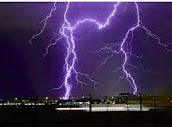Sting: Shadows In The Rain (studio version)
[purchase]
For those who remember 2012, I mentioned in a post that one of the first dates I went on with my now wife was to see the movie Bring On The Night, which was the Michael Apted-directed documentary about the creation of Sting’s first solo album The Dream of the Blue Turtles and the subsequent tour. We loved the movie, and I still have fond memories of seeing it, both because of the film and my date.
I enjoy learning about how music is created, probably because my love of music is not coupled with any real ability to make it. I’m jealous of those who can, so this movie was right up my alley. I was also a big Police fan and had heard, and liked, The Dream of the Blue Turtles. I know that Sting has gotten a reputation for arrogance and pretension over the years, but as someone who likes the often pretentious prog rock, it didn’t bother me that for his first solo album, Sting tried to move beyond the reggae flavors of the Police and try to push the boundaries a bit. As a brief aside, I had the chance to briefly interview Sting the summer before my senior year in college, backstage at an outdoor concert at Liberty Bell Race Track in Philadelphia. He was extremely genial and answered all my probably dumb questions, and readily recorded a station ID that we ran regularly — Stewart Copeland, on the other hand, had to be shamed into even doing a station ID for us. But he did two. You can hear them here.
In addition to wanting to expand his musical palette (which the Police had begun to do as time went on), Sting decided that his band wouldn’t be The Police Mark II (or III, for those few Henry Padovani fans out there), and instead chose young, hotshot jazz musicians. This isn’t as strange as it sounds — Sting’s earliest gigs were playing jazz and fusion music in Newcastle during his free time during college and while working as a teacher. Here's a jazzy tune from Sting's last pre-Police band, Last Exit—the melody of which was used in Blue Turtles' "We Work the Black Seam."
The people that he chose were all extraordinary musicians. Keyboard master Kenny Kirkland had played with Wynton Marsalis, bass player Daryl Jones had been in Miles Davis’ band, and Branford Marsalis, on sax, had been in Art Blakey’s Jazz Messengers, and played with his brother Wynton, Herbie Hancock and Dizzy Gillespie. Drummer Omar Hakim, who was in Weather Report (with Mino Cinélu), was the only member with significant rock credits, having backed Carly Simon, David Bowie and Dire Straits. In addition, Sting brought on veteran backup singers Janice Pendarvis (who was in another of my favorite documentaries, 20 Feet From Stardom) and Dolette McDonald (who worked with the Talking Heads, but was not in another of my favorite music films, Stop Making Sense, or on my favorite Talking Heads album).
The film shows how this mostly non-rock band fused with Sting to create a sound that was still identifiably rock, but had some elements of jazz. Maybe the easiest way to see what Sting was after is to compare the original Police version of “Shadows In The Rain,” a somewhat meandering, spooky dub track, with the studio version from Blue Turtles, which was reportedly based on the original demo that Sting wrote. Amusingly beginning with Marsalis asking frantically what key the song is in over a funky Hakim groove, a harsh voiced Sting enters, and the song turns into an exuberant, upbeat soulful and jazzy tune with solos from Kirkland and Marsalis.
Part of the tension in Bring On The Night, beyond the question of whether the whole concept would work, is that the band was scheduled to play some live shows on little rehearsal. As you can see from the video above, they had no problem with the performance, and the exuberance of the album track is even more apparent.
Another part of the tension in the movie is that it shows, in pretty graphic detail, the birth of Sting and wife Trudy Styler’s son Jake, who is now this guy.
Friday, September 1, 2017
Shadows: Shadows In The Rain
Posted by Jordan Becker at 9:02 AM
Labels: Branford Marsalis, Daryl Jones, Herbie Hancock, Kenny Kirkland, Miles Davis, Mino Cinélu, Omar Hakim, Shadows, sting, Talking Heads, the police, weather report, wynton marsalis





























































































































































































































































































































































































